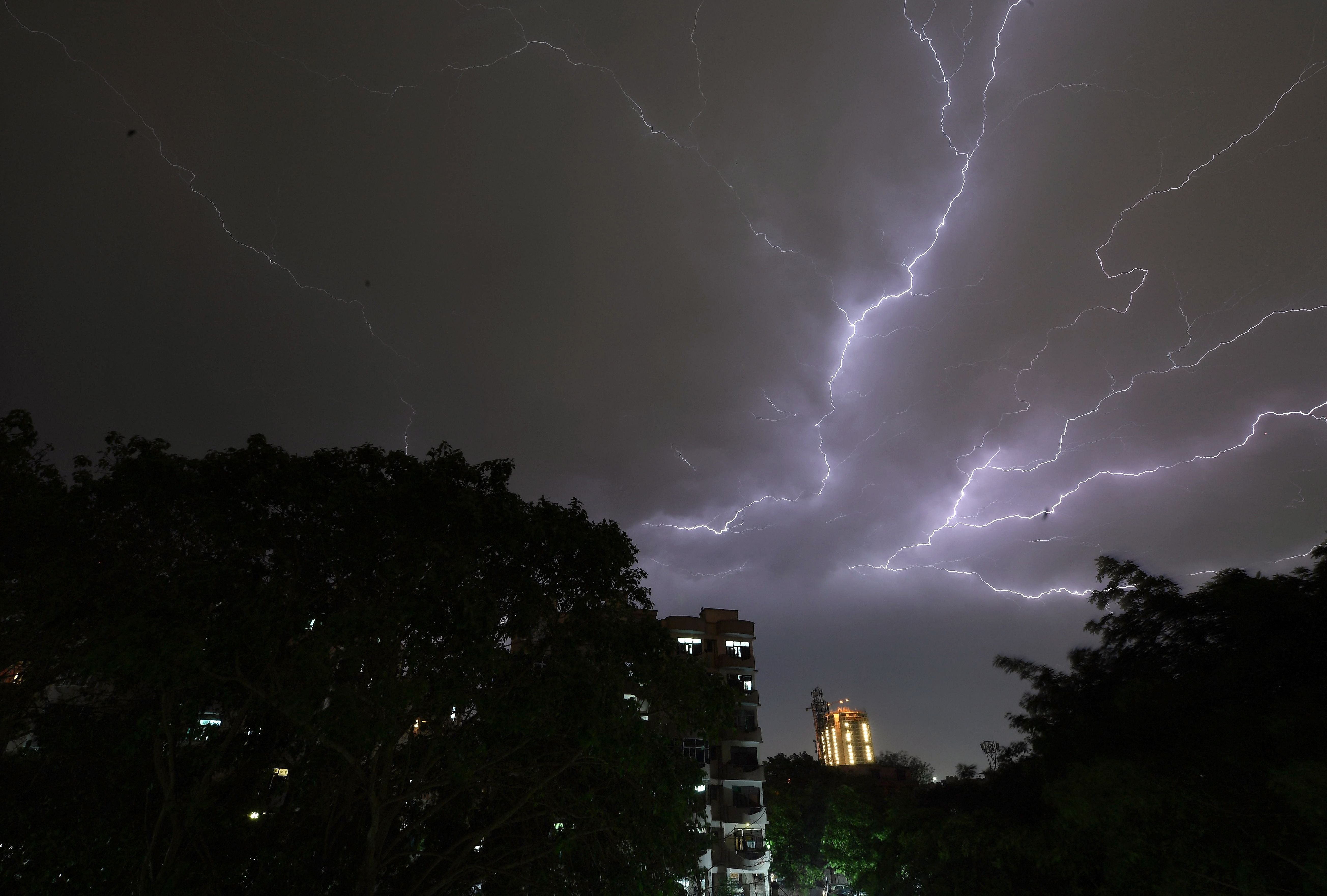India lightning strikes kill nearly 70 people in two northern states
Climate crisis is increasing frequency of lightning strikesm, which kill about 2,500 people every year in India

Your support helps us to tell the story
From reproductive rights to climate change to Big Tech, The Independent is on the ground when the story is developing. Whether it's investigating the financials of Elon Musk's pro-Trump PAC or producing our latest documentary, 'The A Word', which shines a light on the American women fighting for reproductive rights, we know how important it is to parse out the facts from the messaging.
At such a critical moment in US history, we need reporters on the ground. Your donation allows us to keep sending journalists to speak to both sides of the story.
The Independent is trusted by Americans across the entire political spectrum. And unlike many other quality news outlets, we choose not to lock Americans out of our reporting and analysis with paywalls. We believe quality journalism should be available to everyone, paid for by those who can afford it.
Your support makes all the difference.Lightning strikes have killed seven more people in India’s most populous state in the last 24 hours, taking the death toll to 49 for just this week and to almost 70 for two states, as the climate crisis makes occurrences of strikes more frequent.
The state administration of Uttar Pradesh on Thursday said seven people, most of them farmers, were killed in a lightning strike near the city of Kaushambi after they took refuge under a tree during rain. Last week, 14 people were reported dead.
Earlier this week, the neighbouring state of Bihar reported at least 20 deaths across eight districts in a two-day period due to lightning strikes, taking the death toll for this year so far to 181 in the state.
The increased instances of deaths by lightning this year have prompted the state government to issue fresh guidelines for safety in Uttar Pradesh with chief minister Yogi Adityanath calling for the implementation of an early alert system for thunderstorms and lightning.
Frequent lightning strikes are occurring as most parts of India witness an intense monsoon this month with lightning and thunderstorm warnings issued by authorities in several pockets.
Lightning kills about 2,000 to 2,500 people every year in India and places like Bihar are more vulnerable to these strikes.
One of the reasons for India being more susceptible to deaths due to lightning strikes is that a large number of people work outdoors. But it is also a result of poor awareness and education about the dangers of lightning.
There is also growing evidence that the incidence of lightning strikes is getting higher, both in India and across the world, as a result of the climate crisis.
A warming climate leads to more extreme weather, like thunderstorms, and according to a study published by the University of California in 2015, for every 1C increase in temperature, the frequency of lightning strikes increases by 12 per cent.
Hot weather and humidity also create ideal conditions for thunderstorms, according to experts. So as the globe continues to warm and hotter climates face more heatwaves, more storms and lightning strikes become likely.
According to data compiled by Third Pole from India’s National Crime Record Bureau, over 100,000 people died due to lightning strikes between 1967 and 2019 in India, which makes up for 33 per cent, or one-third, of all deaths caused by natural hazards during the 52-year period.
Despite India being highly vulnerable to lightning and the atmospheric phenomenon becoming more and more fatal, the country’s ministry of home affairs does not include it as a disaster.
There have been growing calls for it to be added to the list and more work to be done to make people aware of the safety guidelines and for an efficient system to track the occurrence of these events.
Join our commenting forum
Join thought-provoking conversations, follow other Independent readers and see their replies
Comments